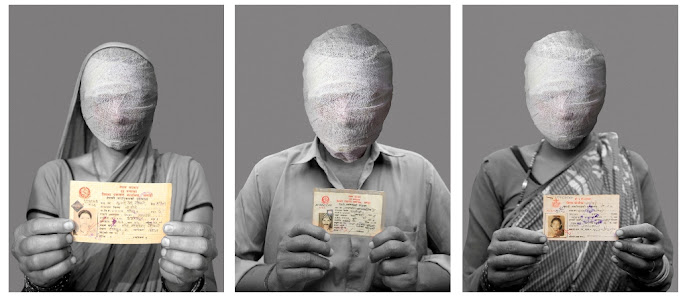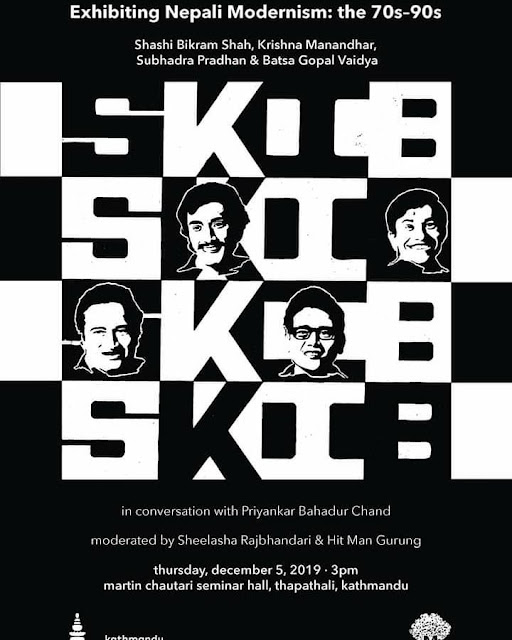'This is My Home, My Land and My Country...'
From the series "This is My Home, My Land and My Country..." 2015
The Tharus are an indigenous group of the Southern Tarai plains of Nepal. They have been subjected to centuries of state orchestrated marginalization and most are still struggling to get equal rights as citizens of Nepal. Although this issue has been taken up multiple times during major political struggles and revolutions, it has never been resolved. Political parties in Nepal have relied on the votes of Tharu citizens to enter halls of power, but rarely are the concerns of Tharu people addressed.
On September 20, 2015, Nepal’s new constitution was promulgated. The constitution demarcated the boundaries of new provinces in an effort to decentralize political power within Nepal. Political movements spearheaded by Tharu groups in wetern-Nepal were demanding for an ‘Autonomous Tharuhat Province’. However, the constitution offered no concrete recognition or decentralization of power to the Tharus. In the aftermath of the constitution’s passing, massive protests were organized in the Southern plains. These were often met with harsh violence from government security forces, leading to widespread death and displacement.
These photographs and drawings address the contradiction between politically motivated narratives and the lived reality of the Tharu community. It also highlights the bitter truth that indigenous citizens often face complications, fear, and insecurity in their own lands. 
'We are in war without enemies', 2016 ( titled after Doctors without borders),
from the series "This is My Home, My Land and My Country…"
The work is in four panels.
The size of each panel is:
On 25 April, 2015 Nepal was hit by a 7.8 magnitude earthquake. For weeks, several aftershocks followed and on 12 May, another 7.3 magnitude earthquake horribly damaged the central region of the country. The combined death toll was close to 9,000; more than 21,000 were injured; many monuments, heritage sites and thousands of houses were destroyed. The Government of Nepal raised $ 4.1 billion for relief and rebuilding, but more than a year after the earthquake, thousands of families still lived in terrible conditions inside temporary shelters. The earthquake has exacerbated the dismal livelihoods of Nepal’s poorest and most marginalized.
In the artwork, the individual with the bandaged face carries photographs of his damaged home. The photograph is the only remaining memory of his house, it furthermore acts as evidence to file for relief claims from the government. Sadly, the funds are not easily accessible to those without political reach. The background is stapled with multiple images of earthquake affected landscapes; some houses have collapsed, there are injured people, heritage sites reduced to rubbles, and others trying to escape the chaos. These photographs were taken by the artist and his friends, some are from the internet. This work comments on the Government of Nepal’s hypocritical behavior in the process of post-earthquake rebuilding and resettlement process.
'Culture of Silence' Phase I , Protest Performance
Culture of Silence was a protest performed in solidarity with Dr. Govinda KC, a veteran surgeon-activist. Dr. KC was fasting unto death for the eight time, demanding the Government of Nepal to deliver better health services for poor citizens and to deprivatize the country’s medical education system.
There were two distinct performances. In the first one the artists shaved their heads, covered their bodies with words from Dr. KC’s manifesto, and proceeded to walk barefoot–with their eyes shut–from their studio to the Constitutional Assembly building in New Baneshwor, Kathmandu, a distance of four kilometers. The second consisted of a performance in front of the Prime Minister’s residence in Baluwatar, Kathmandu. The artists sat still as volunteers slowly covered their bodies–from their heads to their toes with gauze and surgical tape. The audience was then invited to write their thoughts and reflections on the protest. This process lasted nearly four hours.
The first performance held on July 23 was a part of a larger demonstration, for which around 10,000 people gathered in solidarity with Dr. KC. The following day the government felt compelled to sign an agreement with Dr. KC conceding to his demands of regulating private medical education and improving access to healthcare. Unfortunately, not all the points of the agreement have been implemented, and the Nepali government remains indifferent to these pressing issues.
On September 20, 2015, the Second Constituent Assembly of Nepal drafted the long anticipated new constitution. This discriminatory Constitution neither secured equal citizenship rights, nor political representation for marginalized communities. Furthermore, the government then proceeded to brutally suppress protests rallying against the Constitution especially in the Southern belt of Nepal. This instigated a blockade at the Nepal-India border, leading to an inadequate supply of raw material, fuel, and cooking gas for months. It also forestalled the import of medicines and relief material for earthquake affected communities, resulting in a major humanitarian crisis. The ensuing shortage severely affected daily life, even more so than the devastating earthquakes of April and May, 2015. Many educational institutions, hospitals, government offices, banks, shops, agricultural activities and transport services were crippled.
These miniature bronze sculptures are based on the issue of the fuel crisis in Nepal. The sculpted oxygen cylinders, cooking gas cylinders and petrol gun are engraved with the testimonies of people who have been deeply affected by the blockade.
‘The Bride’ 2014
The dowry system is a practice of giving money, property, and gifts during a marriage from the bride's family to the groom's. Generally a dowry includes cash, jewels , gold, electrical appliances, furniture, land, and vehicles. It is supposedly presented to assist the newly married couple to kickstart their married life.
In many cases the groom’s family demands are excessive. And when the demands are not met, the bride is subject to torture, and even killed. The reason many parents don't want to have daughters is because of the dowry they will have to shell out at her wedding. Even well-educated families start saving up money for their daughter's dowry as soon as she is born.
Nepal has a high dowry death rate following Pakistan, India, and Bangladesh in South Asia. This triptych depicts the horror of the dowry system in our society. The first image depicts a young and innocent bride at her marriage ceremony. The second shows her swollen face, as she is subjected to domestic violence. In the last one she is burned alive , as her dowry was never paid in full.
'SOLD' is an ongoing work on the long history of human trafficking especially from Nepal to India, the Middle East, and South-East Asia. According to a report by the National Human Rights Commission (NHRC), human trafficking in Nepal increased by nearly 40 percent in 2015 following the devastating earthquakes. The majority of trafficking victims are women and girls who are particularly vulnerable due to limited economic opportunities, illiteracy, and the low socioeconomic status afforded to women.
The trafficking of girls from Nepal into India for forced prostitution is perhaps one of the busiest slave trafficking routes anywhere in the world, with an estimated 5,000-10,000 Nepali women and girls trafficked to India each year. Many victims who end up overseas are trafficked through India first.
The currency in this artwork symbolizes the illicit transactions and networks that facilitate trafficking. The red barcodes on each portrait depicts the reduction of humans into commodities.
- Portraits of 100 People from Different Age Groups, gender and background living in Kathmandu.
- Collaboration with 28 Art Students.
- 5 Days performance on the Streets.



























































Comments
Post a Comment